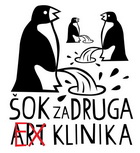How has the Covid pandemic affected culture?

The corona virus pandemic has drastically affected Serbia’s cultural and creative sector, which was already in a difficult position, with one of the smallest budgets for culture in Europe. A study on the socio-economic impact of the pandemic, conducted by UNESCO, displays that the various restrictions introduced due to the pandemic have greatly affected all workers in the cultural sector in Serbia and several other countries in the region.
The Socio-Economic Impact Assessment of COVID-19 was conducted between April and July 2020 also in Albania, Bosnia and Herzegovina and Montenegro. Methodology consisted of a collection of quantitative and qualitative data through desk reviews, interviews with representatives of the Ministry of Culture and culture sector representatives, and two surveys. According to UNESCO, while the results obtained from this assessment were not reflective of the complete impact of the pandemic in South-East Europe, they highlighted how these different countries were coping with the crisis.
The implementation of lockdown measures by the governments of Albania, Bosnia and Herzegovina, Montenegro and Serbia as a response to the COVID-19 situation in March 2020, resulted in the closure of cultural institutions, cultural and creative industries. In all four countries, cultural events and activities were cancelled and suspended, having negative consequences on their economy.
Telecommuting became the new norm for employees of galleries, museums, educational institutions, with some contracts of temporary and volunteer workers getting terminated. Budget cuts and other reductions stung cultural and creative industries, with the loss of revenue not helping with the situation. The majority of creative industry enterprises surveyed showed that they had resources to remain functioning for a few months, but only a few had the resources to remain active indefinitely.
In Serbia cultural institutions and independent centers, as well as other spaces were closed mid-March due to the state of emergency, and almost all events were canceled and postponed. Independent artists were left without bookings and their mobility was greatly affected.
The Government of Serbia had approved a one-time aid of 90,000 dinars for around 2,300 independent artists who were prevented from working for three months (March, April and May). The freelance associates of Belgrade cultural institutions – about 300 of them, received help from the city authorities. The assistance of the Government of Serbia, a total amount of 211.7 million dinars, however, did not refer to numerous members of the cultural scene who do not enjoy the status of independent artists, and had found themselves in an existential crisis due to the inability to work and incur any income.
Due to the rebalancing of the entire state budget, the budget for the Ministry of Culture and Information was reduced by 20 percent due to the pandemic, which then reflected in the funds planned for the annual open calls for co-financing projects, too.
According to the survey, most cultural institutions did not have to lay off any workers (only 1.8% had to reduce the number of employees, while 5.3% terminated contracts with permanent associates), a large number of them lost almost a half of their usual income (47.9%). Mostly the money from tickets sale, souvenirs and other services, while about 13% had a smaller budget due to the postponed or canceled public open calls for culture. Only about 32.8% stated that the economic situation has remained unchanged.
The cultural tourism was also affected by the pandemic, which showed a 65.8% drop in visits in March 2020.
The research showed that the film industry, in March alone, lost 9.6 million Euros, since as many as 73% of companies’ ceased working. During the same period film distributors and cinemas lost five million Euros.
As the research results suggest, 73.1% of all cultural institutions and 53.3% of the respondents from the creative sector have adapted to this new situation by transferring their contents to the online space. As many as 81.8% of the respondents noticed an increase in visitors to websites and social networks.
A total of 562 cultural institutions (530 public institutions, 12 private and 20 that are part of public companies, foundations, religious communities, and universities) were contacted during the data collection, as well as 6,476 companies. A 60% of all cultural institutions participated in the research, and only 1.6% of all companies.
The research was conducted by The Center for Studies in Cultural Development, the Serbia Creates Platform and the Ministry of Culture and Information, with the help of the Chamber of Commerce of Serbia.
(SEEcult.org)
*Support: International Relief Fund of the German Federal Foreign Office, the Goethe-Institut, and other partners














